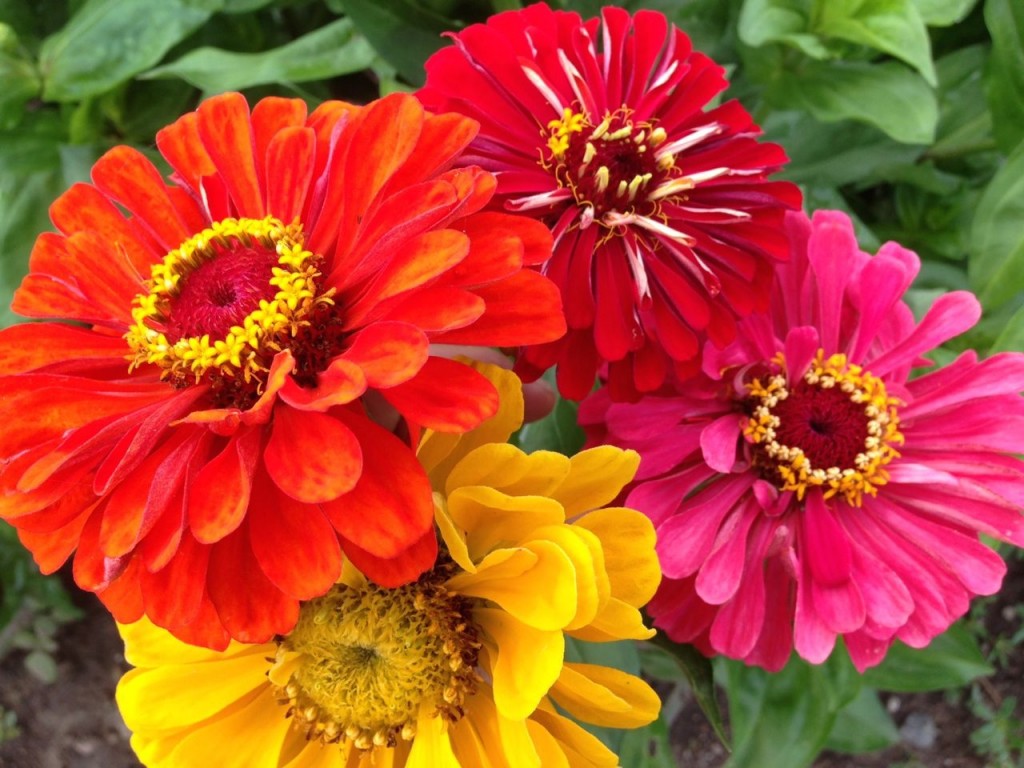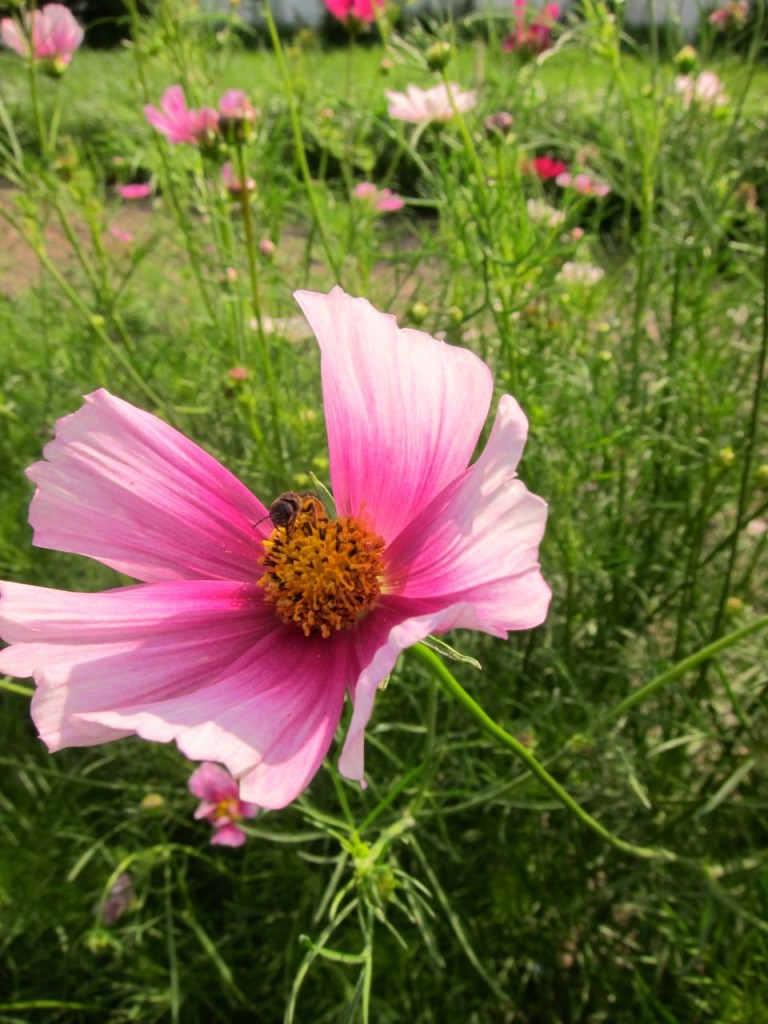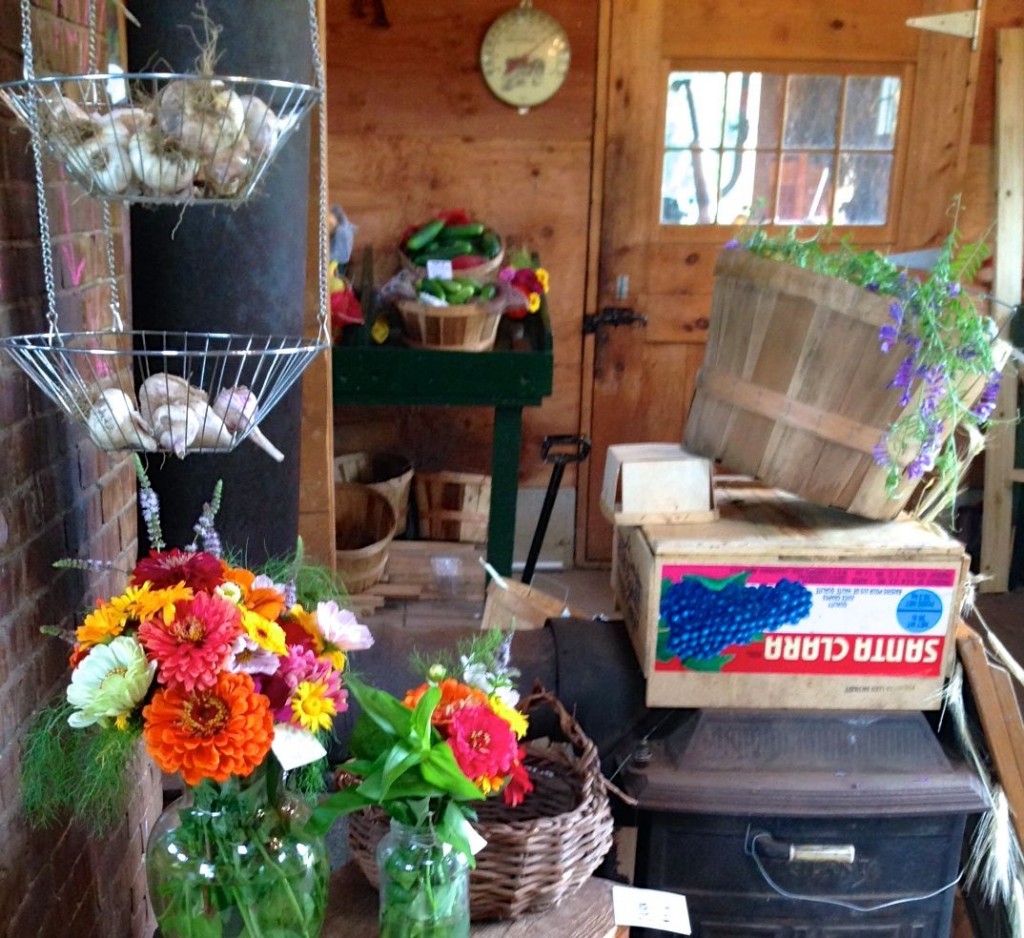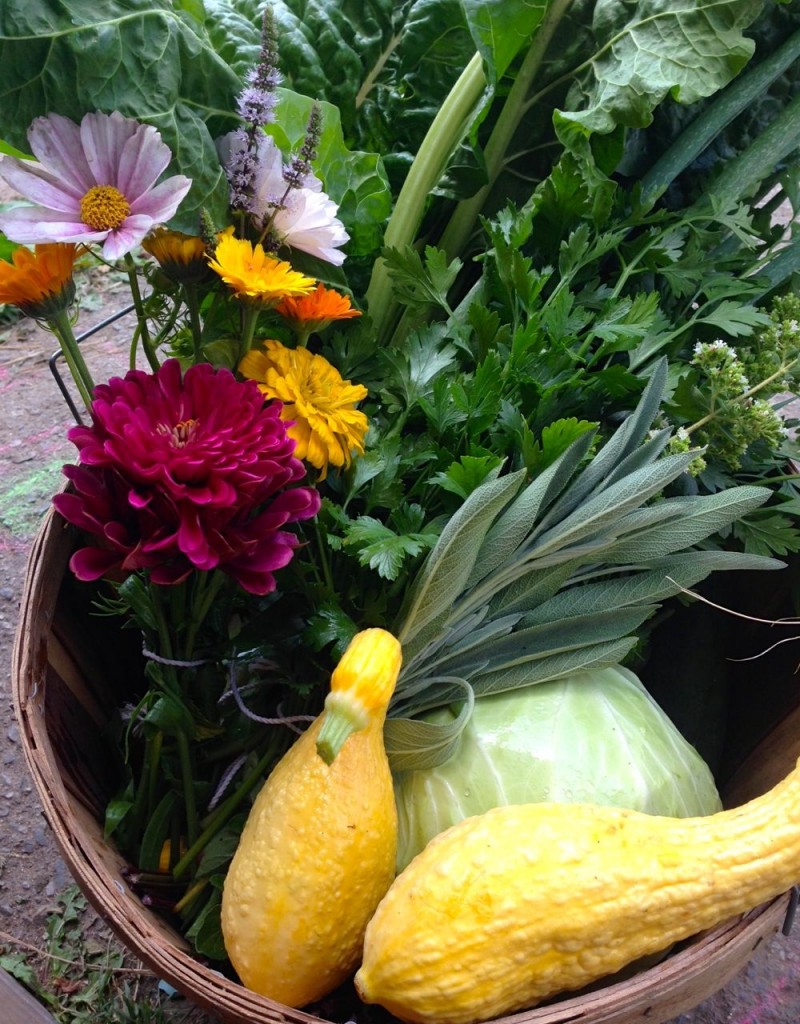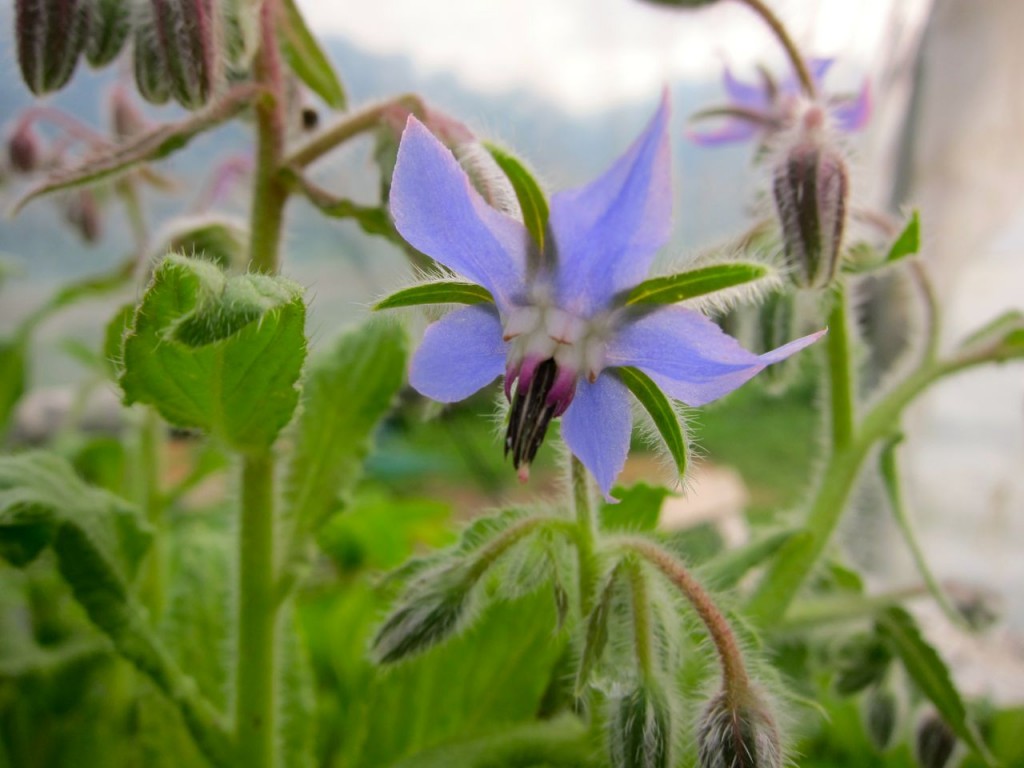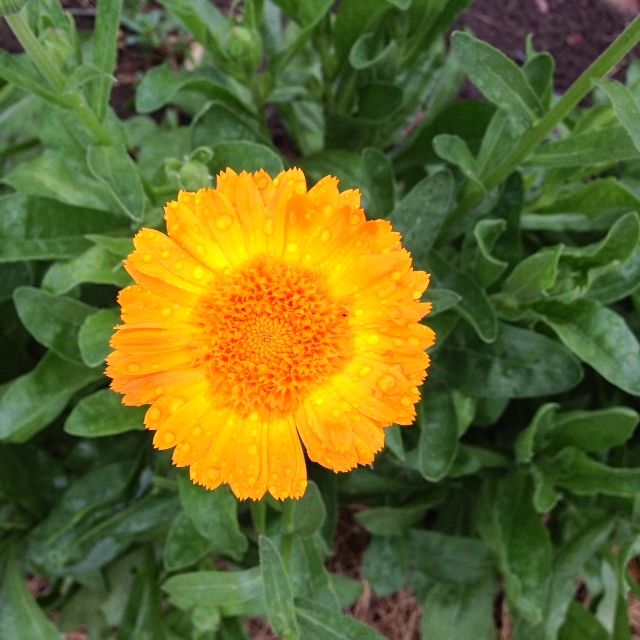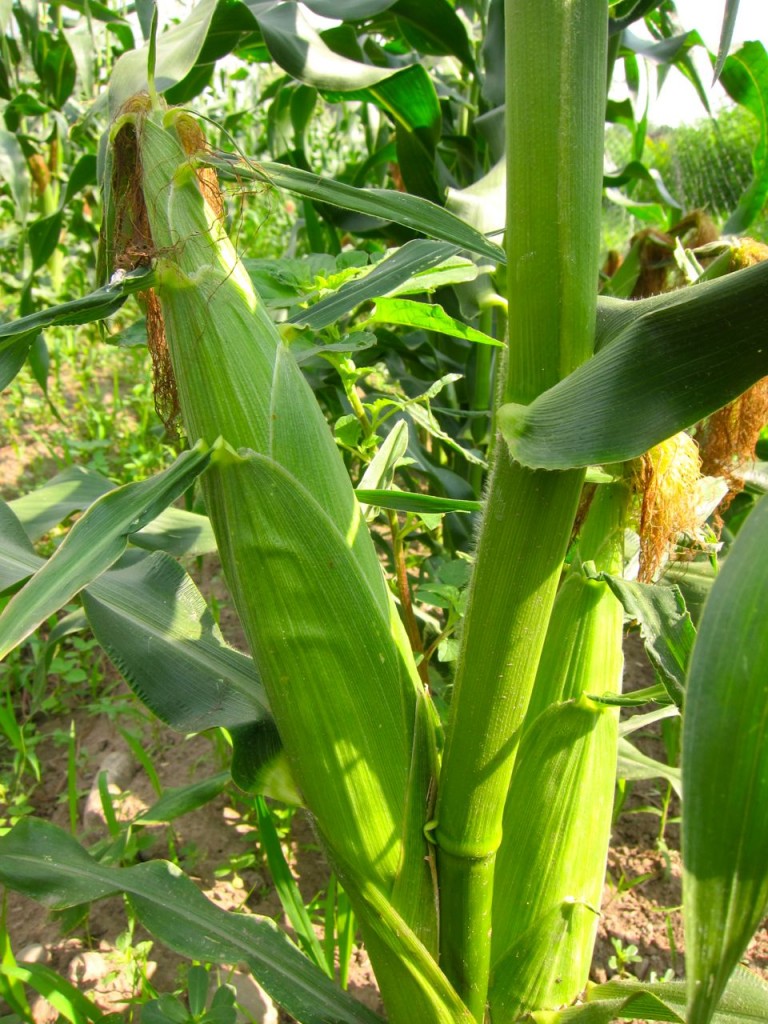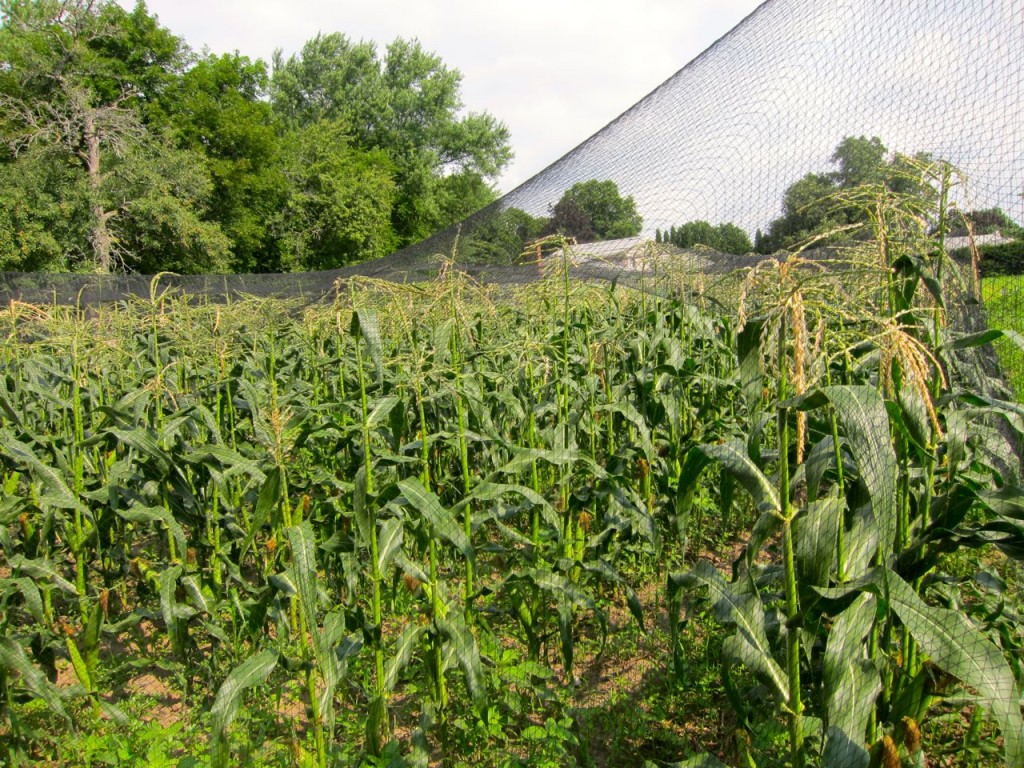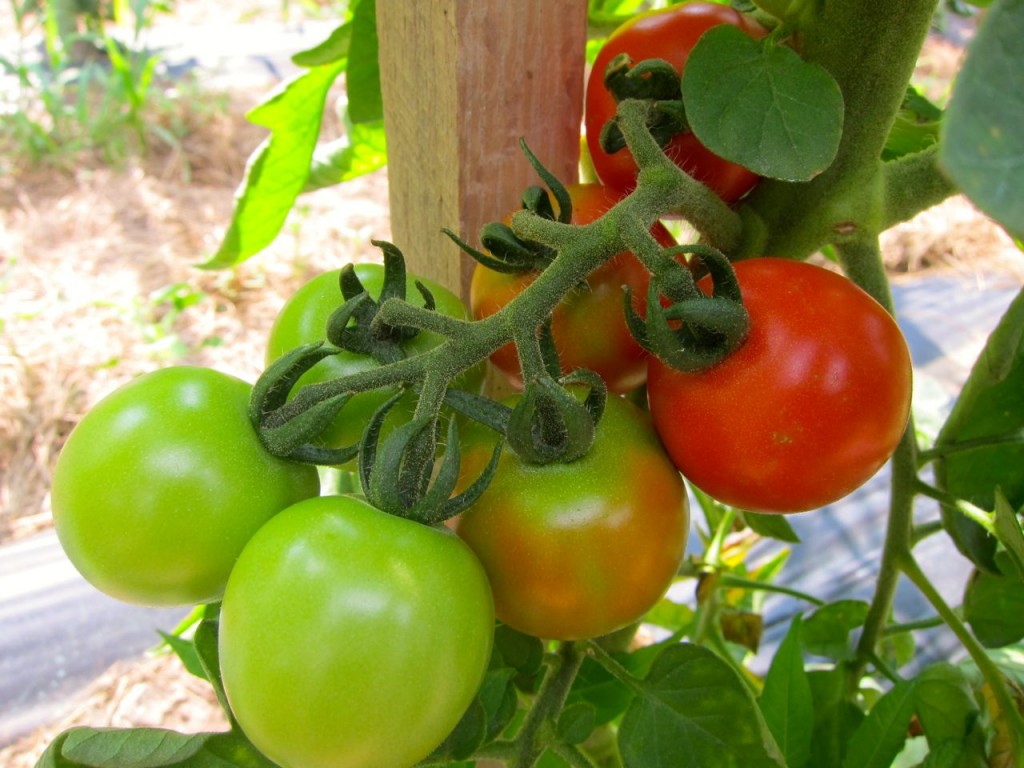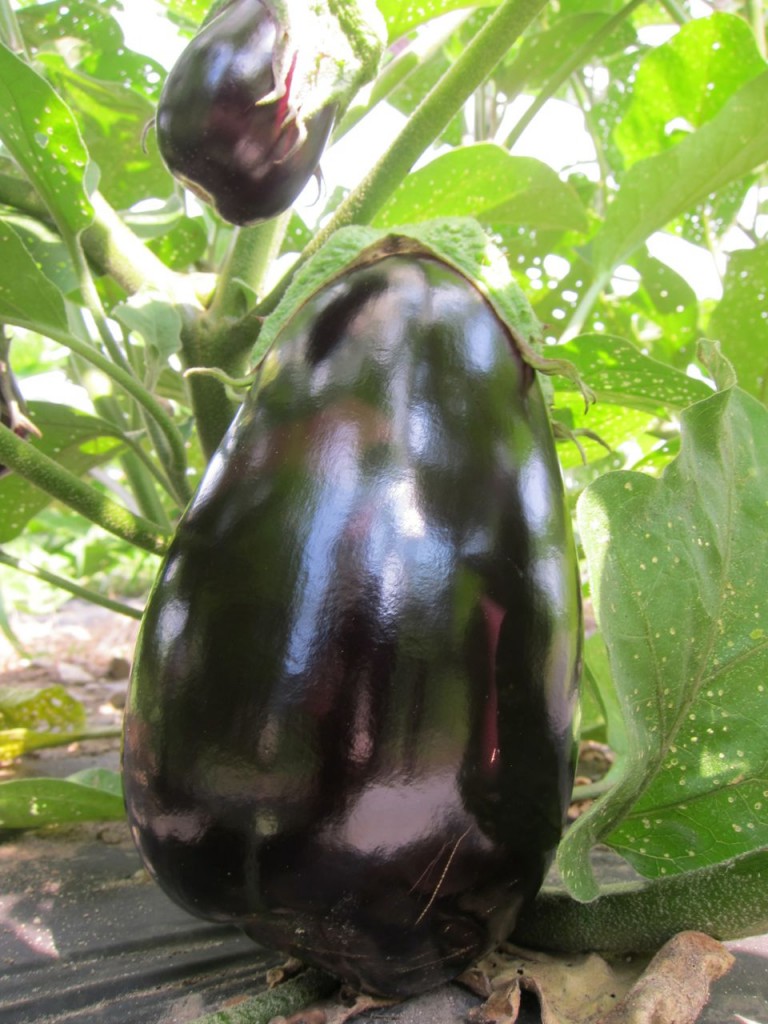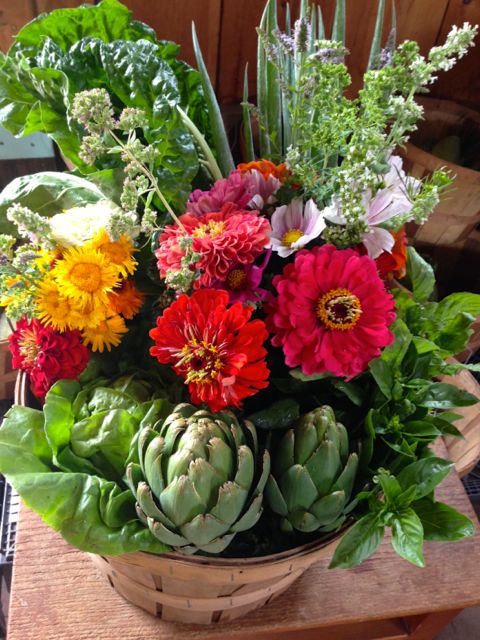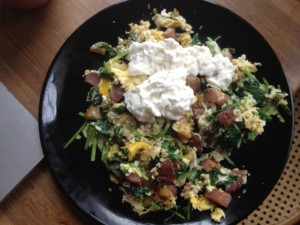Weeds are, of course, a farmer’s nemesis. We spend a good share of our time trying to stop the incredible growth of “volunteer” plants that compete with our cultivars for water, sun, and nutrients. Ironically, weeds wouldn’t grow without our help disturbing the ground and offering them resources, and, in that way, as products of the farm, it’s especially nice when they can be treated as produce.
Eating the weeds is definitely one of the more fun methods of control, and we hope you’ll be happy to help. This week we’ll begin putting one particular weed in shares and on the stands. There are lots of edible weeds out there, but we’ve decided to start with the tastiest and richest in nutrients: purslane.
Purslane is believed to have originated in India and Persia, and it has long since become established in gardens (and cracks in the sidewalk) worldwide. You probably have some growing in your backyard right now. The farm is just filled with the stuff, and we’re grateful that it’s so easy to pick, delicious, and good for us.
Purslane has a sweet, salty, lemony taste, and the crispy stalks are as good as the leaves. In many culinary cultures, it is lightly cooked and served with a vinaigrette. In our opinion, though, purslane is best when eaten raw, chopped up into a salad or used in place of lettuce in a sandwich.
As far as nutrition, purslane beats most cultivated crops hands down. According to Jo Robinson’s Eating on the Wild Side, purslane has “six times more vitamin E than spinach and fourteen times more omega-3 fatty acids,” not to mention “seven times more betacarotene than carrots.” Didi Emmons adds to the accolades in her Wild Flavors cookbook: “Purslane contains more omega-3 fatty acids than any other leafy land plant. For a land vegetable, it has an extraordinary amount of eicosapentaenoic acid (EPA), an omega-3 fatty acid found mostly in fish, some algae, and flaxseed. Purslane also contains potent antioxidants, as well as vitamin A, potassium, and calcium. And it is extremely low in calories.”
The fatty acids are probably responsible for purslane’s reputation as mucilaginous, and it’s true that if overcooked it can become slimy. This is one reason we prefer to eat it raw, but it’s worth noting that there are some classic Armenian and Mexican recipes for (lightly) cooked purslane. Barbara Kafka’s recipe for purslane salad, which we’ve adapted slightly here, is our favorite by far. Traditional Mexican preparations for “verdolagas” pair nicely with other items available at Belmont Acres, including pork from Bascom Hollow. We’ve included a couple of our favorites below, but ask your neighbors for more!
Purslane Salad with Potatoes and Eggs and Citrus-Tahini Dressing
8 cups purslane cut or torn to salad size pieces (stems included)
2 cups boiled, cubed potatoes
4 hard boiled eggs, peeled and quartered
4 teaspoons roasted sesame seeds (optional)
Dressing:
3 tablespoons tahini
3 tablespoons olive oil
juice of 1 or 2 lemons
salt and pepper to taste
Wash the purslane. Toss the purslane with the dressing. Place the potatoes and eggs on top. Sprinkle with sesame seeds and serve.
Modified from Vegetable Love, Barbara Kafka
Pork and Purslane Stew — Verdolagas a la Mexicana con Puerco
2 tablespoons cooking oil
2 pounds country-style pork ribs cut into 2 inch pieces
1/2 onion, chopped
2 jalapeno chiles, chopped seeded and diced
2 cloves garlic, finely chopped
3 very ripe tomatoes, diced or one 14oz can of diced tomatoes
1/2 teaspoon dried oregano or 1 stalk fresh oregano leaves
1 pound purslane, leaves and stems
Fry the pork in the oil to brown. Add the onion, chiles, garlic and cook until onion is golden brown. Salt. Add tomatoes and oregano. Lower heat and cook, covered, for 35 minutes until very tender, adding water if necessary. Wash and chop the purslane. Steam the purslane in a saucepan with a few drops of water for 5-10 minutes until tender. Drain and add to pork, stir, and taste for seasoning.
From Cocina De Le Familia, Marilyn Tausend
Armenian Purslane (Per – Per) Salad
1 medium tomato, chopped
1 medium seedless cucumber, peeled, chopped
2 cups purslane leaves and tender stems, gently, but thoroughly, washed; pat dry
2 cups lettuce (your choice), washed, cut into bit-sized pieces
½ cup Italian parsley, chopped
3 scallions, chopped
Place all of the salad ingredients in a large bowl.
Dressing:
Juice of one lemon
3 Tbsp. olive oil
2 tsp. ground sumac, optional
Salt and pepper to taste
From: http://www.thearmeniankitchen.com/2012/06/purslane-aka-per-per.html

